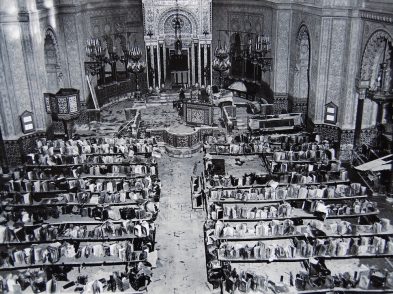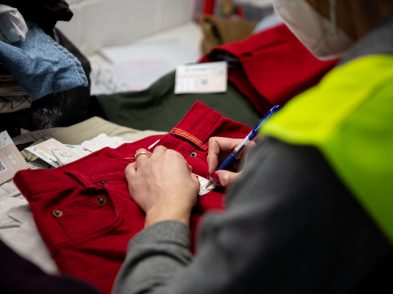Palazzo Strozzi’s lastest exhibit, Springtime of the Renaissance, takes on a double challenge: explaining the roots of the Renaissance, topic of extensive historiography, and convincing the crowds to go see a show about sculpture.
Sculpture is generally less sexy and less of a crowd-pleaser than painting. This can be backed up by statistics: visitors to the Bargello are 9 times fewer than those to the Uffizi–or rather, 198,000 versus 1.8 million. But the Renaissance began with sculpture, not with painting, and this season’s blockbuster at Palazzo Strozzi is likely to appeal to most visitors who give it a chance.
It’s a thematic itinerary that explores the cultural contexts that impacted the style and iconography of sculpture from 1401 to 1460 (dates defined by the contest for the Baptistery doors and closing with the death of Cosimo the Elder and of Donatello, which saw the rise of a new political order as well as a stylistic change). Curators Beatrice Paolozzi Strozzi and Marc Bormand have managed to make this potentially difficult material come alive through visual comparisons and helpful, bilingual (English and Italian) wall text. Visitors can also take advantage of the museum’s education department and various tools and events to get an even better grasp on the topic.
The exhibit opens by demonstrating continuity from the International Gothic style towards the more naturalistic and plastic style of the early Renaissance. It then moves on to some of the sculptures that best define this important moment in the first two decades of the Quattrocento: the competition panels of 1401 for the Baptistery (Ghiberti and Brunelleschi); works for the Duomo and for the external niches of Orsanmichele by Ghiberti, Donatello and Nanni di Banco.
Having set the stylistic stage, visitors move on to rooms that are organized thematically. The putto, or spiritello, gets a whole room, as does the equestrian monument and the Madonna and Child. Visitors will see examples of connections between sculpture and painting, and learn about the importance of beautiful decoration even for the hospitals and orphanages that serve the city’s poorest.
While these themes will be very familiar to Renaissance scholars, as they are based on the past few decades of thinking on the period, the innovation in this exhibit comes from the way that it is presented to the general public, who, contrary to scholars, have few, or no opportunities to examine sculpture in this way: in person, up close and through comparison. For example, the visual comparison between the Baptistery door competition panels by Ghiberti and Brunelleschi, usually performed in a corner of the Bargello’s Donatello room, now takes place at the center of a large space, topped by the wooden model of the Cupola by Brunelleschi (on loan from the Opera del Duomo museum) and flanked on either side by Roman sculptures—a spinario and a torso of a centaur—that explicate the ancient references used by the Renaissance sculptors. A method usually relegated to text comes alive in real space. In another room, the great sculptures of Orsanmichele, so closely related to humanist ideals, are shown alongside portrait busts and illustrated manuscripts of classical texts owned by those humanists. Again, the curators use scholarly, textual methods in a visual fashion that permits viewers to make their own connections.
Some of the highlights at the Springtime of the Renaissance are works that were restored specifically for the exhibit. Donatello’s Saint Louis of Toulouse is usually displayed high up on a wall in the museum of the Church of Santa Croce; at Palazzo Strozzi we can get up closer to him and appreciate his true mass, as well as the innovative technique used by Donatello, who conceived of the saint as a sort of heavy shell of fabric. The new technical insight published after this restoration by Ludovica Nicolai has encouraged a reconsideration of Donatello’s bronze casting ability, which had been criticized by Giorgio Vasari. In addition to this, two candle-holding bronze spiritelli that Donatello made for the marble Cantoria (now located in the Opera del Duomo museum) have returned to Florence for the first time, on loan from Paris’s Musée Jacquemart-Andre. They were also newly restored for the occasion. They are a pleasure to see in person since the literature on these little boys is rather long; some scholars argue that they are by two different hands, but recent technical analysis has proven that they were cast with the same alloy, contradicting the assumption that they are from different dates, though not precluding the intervention of two artists. This is an opportunity to clearly see the front and back of the works and observe major differences in the finishing techniques used.
Should seeing all of this sculpture make you long to touch it, have no fear: an interactive room with plaster casts and small bronzes allow you to do just that. Furthermore, you can participate in the weekly ‘Please Touch Tour,’ in which visitors will be able to touch a Renaissance altar frontal while wearing white cotton gloves. Secondary wall text in the show is also about touch, giving impressions of sculpture by blind people.
The number of loans and the exceptional quality and size of the works involved make this an important exhibit; in collaboration with the Louvre, it will travel afterwards to Paris, where museum-goers have even less opportunity to encounter an explanation of the Renaissance on this level. If you want to better understand the art you see in the city around you, go to Palazzo Strozzi this spring.
Springtime of the Renaissance
Until August 18, 2013
Palazzo Strozzi








